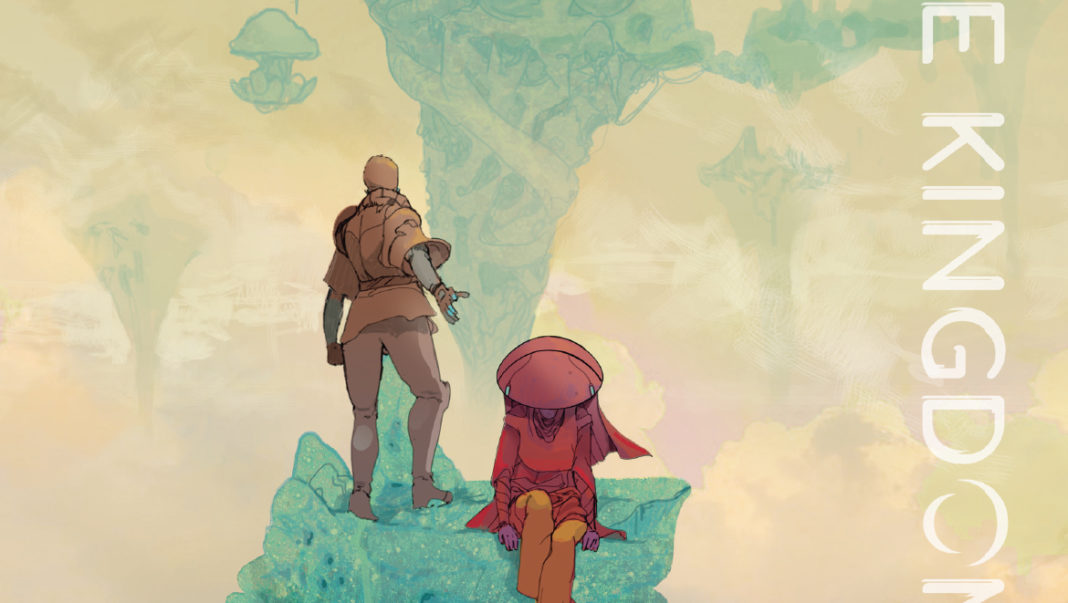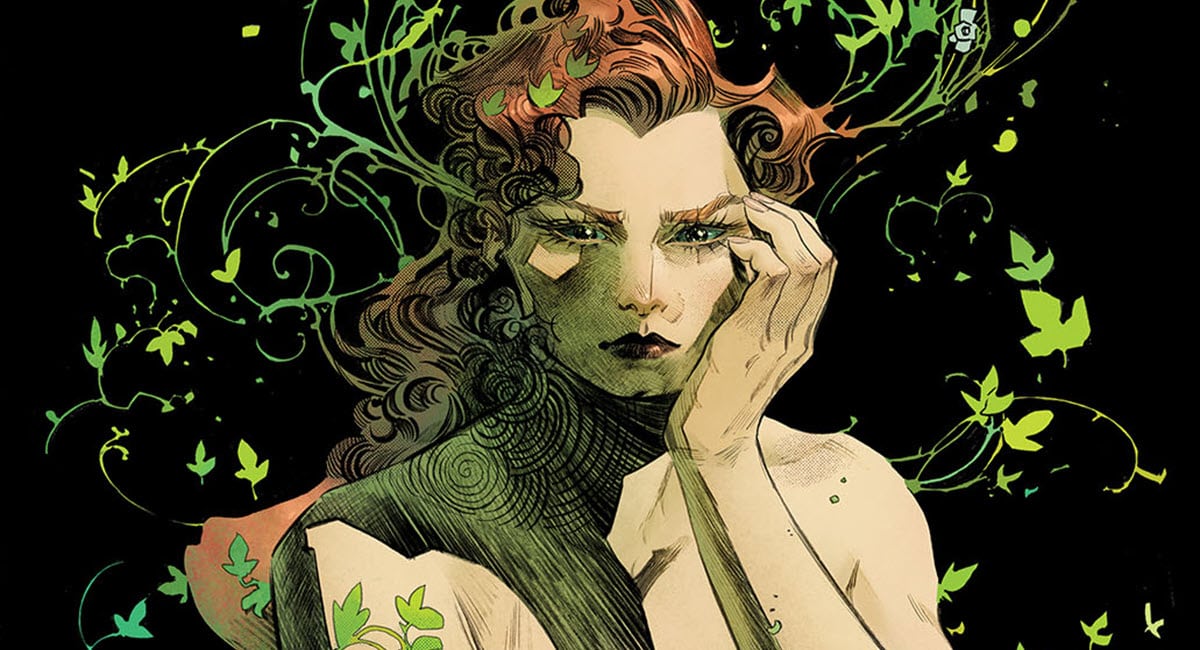By Gregory Paul Silber
NYCC 2019 seemed like a good weekend for writer G. Willow Wilson. Her most famous co-creation, Ms. Marvel/Kamala Khan, was revealed as the main, playable character in the upcoming Avengers video game, with Wilson confirming that she consulted on the teenage superhero’s dialogue. Later, she was announced as the new writer of The Dreaming, a long-awaited “bucket list” project in The Sandman Universe family of DC titles, with art by Nick Robles.
I didn’t know any of that before I sat down with G. Willow Wilson in the Dark Horse Comics booth to discuss Invisible Kingdom, her creator-owned sci-fi series with stunning art by Christian Ward (Ody-C; Black Bolt). It’s a fascinating series set in a distant corner of the universe, exploring a dangerous conspiracy between a massive corporation and a powerful religion, with an unwitting delivery crew and a “space nun” caught in the middle. It’s a thoughtful, suspenseful story, and with the first volume set for release later this month, it’s just getting started.

Gregory Paul Silber: The first thing that stuck out to me about Invisible Kingdom, aside from Christian Ward’s incredible art — which we will definitely get into — was the back and forth between the crew. I think most sci-fi, especially the space-faring kind, comes in either of two varieties: militaristic, formal, and cold; or, you know, your Guardians of the Galaxy, your Millennium Falcon. That kind of swashbuckling, humorous banter. Here it’s like they’re just co-workers. They didn’t dislike each other, but just the attitude was “let’s just get the job done and try not to kill each other.” What drew you to that approach?
G. Willow Wilson: You know, with this story, I kind of wanted to combine a couple of different things. And one thing that I wanted to do was kind of replicate this megacorporation, late-capitalist economic atmosphere that should feel very familiar to people living in the actual real world in the 21st century. And so essentially, the crew of the Slum Dog are like Amazon delivery people. You know? They’re working together to do a kind of demanding and yet low-paying job. They’ve got a corporate minder on the ship whose job it is to make sure that they stay up to snuff and up to corporate standards.
So yeah. They’re not drawn together for idealistic reasons. You know? They’re not there to explore the galaxy. They’re not there to fight a war. They’re there to deliver packages. And the last thing they expect is to get sucked up into this massive conspiracy between the system’s largest corporation and its most prominent religions. So yeah, that’s actually a good observation. They’re very much just co-workers doing their job trying to get a paycheck. And they were not expecting to be tied together in this way.
Silber: The comparison that I made in my head — and I don’t know if this makes any sense or came to mind for you — was “oh, they’re like the Futurama delivery crew.” But like, if that was actually more grounded and more realistic.
Wilson: Yeah! Yeah, I think that’s definitely a good comparison, because the job description is pretty similar. Essentially it’s, you know, they’ve turned their very crummy, not-state-of-the-art spaceship into a delivery van [and] they’re delivering stuff for the corporation. Absolutely, there’s a Futurama parallel!
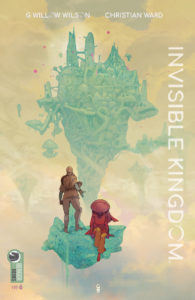
Silber: Invisible Kingdom overall is pretty tonally distinct from what I think you get in most space-set sci-fi, space fantasy, whatever you want to call it. I was wondering if you could talk about some of your influences. Did you pull from anything fans might not have expected?
Wilson: Some things that they may not have expected. Hmm… well I think like a lot of people, one of my favorite sci-fi series that was a sort of formative work for me when I was in my late teens was Cowboy Bebop. So I think tonally, there’s some notes in there. You know, it’s a space opera. And yes, it has the big operatic moments. But it doesn’t take itself too, too seriously. And by that same token, I think we really wanted to strike a balance between humor and discussing relevant, real-world ideas. So drawing from that kind of space. And space nuns… you know, I think there’s some Dune DNA in there.
Silber: You mentioned that one in a text piece in the first volume.
Wilson: That makes sense. (Laughs) I keep coming back to it. Because you know, when people think about religion in space opera, Dune is one of the first things people think of. So it’s eclectic. I’d never done space opera before. I kind of wanted to throw a bunch of ideas into a pot and see what we could cook up. There are definitely various elements that I hope come together in exciting ways.
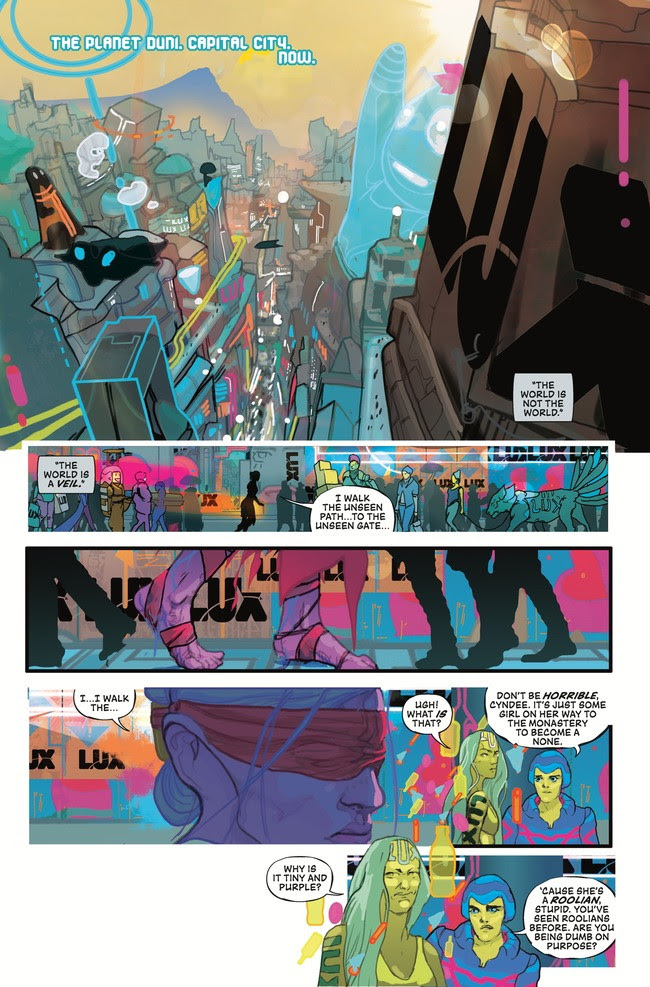
Silber: You brought up the space religion. I’m fascinated by the religion that you created for this universe. I did NOT Google this, but to the best of my knowledge, it’s not a real religion!
Wilson: (Laughs) No, it’s not a real religion.
Silber: But it does feel real, especially with the captions quoting from this fictional scripture. It feels pretty fully-formed. Was it fully-formed in your head before you started writing, or did you evolve what this religion was about as the plot progressed?
Wilson: The fundamentals were very clear to me from the beginning. I wanted it to be a religion that would be familiar to those of us living here on planet Earth, but at the same time not replicate any one faith too closely. So it’s a non-theistic religion. They don’t believe in a god, but what they do believe in is that there’s a kingdom, or a plane of existence that we can’t get to that’s better than this one. In order to get there, we have to strive to discipline ourselves, you know? Not to give in to worldly desires. To meditate, to fast, to withdraw from the world a little bit, and this allows us to see the Invisible Kingdom, which is of course where the series gets its name. We could reach it if we follow this path. So it has philosophical elements in common with certain real world faiths, but it’s very much its own thing, certainly in not having a god or gods. That makes it a little bit unusual.
Silber: Definitely not Abrahamic!
Wilson: (Laughs) No, definitely not. But there are certain elements of the ascetic lifestyle that you could see parallels with in certain Catholic doctrines. Of course, you know they have a monastic tradition. They have certain things in common with a Buddhist monastic tradition. But again, these are very light influences. It’s very much its own thing. It doesn’t exist to promote any ideology. It exists in a way to show the ways that religion plays out in daily life in ways that are helpful, and in ways that are harmful. And the chronic ways in which spiritual authority can be abused, which is what happens in the story when the space nun discovers this conspiracy between the leaders of her faith and this giant corporation.
Silber: It definitely feels very universal but also in a way that… you know, anytime you write about religion, there are going to be people who are like, “oh you’re saying this about these people, or that about these other people!” And here, it’s like the moment you start thinking, “oh this reminds me of this one religion,” you realize, “oh, I don’t know what to compare this with anymore.”
Wilson: Yeah, one of the things we really wanted to do was make the architecture distinct, the iconography distinct, the clothing distinct, because we purposely did not want to make any distinct parallels with an existing faith tradition. So that’s how you get this funky kind of mushroom-shaped architecture that Christian came up with. And it was his idea, since so many Earth religions rely on tall structures. Church spires, minarets… he wanted to do the opposite. Create empty space. Circular stuff. Negative space. So that’s why you see a lot of the architecture of the Renunciation going in the exact opposite direction of the Earthly, faith-based architecture.
Silber: That’s fascinating, and segues easily into my next question because Christian is an incredible artist. A book like this, with all these different locales and different-looking alien species, really seems like an opportunity to let him loose creatively. So what was it like collaborating with him?
Wilson: Christian is amazing. He really has it all. He’s an incredible world builder. Obviously his use of color is second to none. And he does everything himself. You know, he lays everything out. He doesn’t do traditional line art. He goes straight into color in a really interesting way.
I feel like we have collaborated quite closely on this story. A lot of the ideas about those environments came from him. I’d throw out something very basic or general in the script, and leave room for us to have those discussions so we can bring in his ideas about “oh, what if we did this on this planet” or “what about, architecturally, if we used all this negative space?” So it’s a close collaboration really in every way and I feel very fortunate to have been able to work so closely with Christian, because he really is in his own league in many ways.
Silber: Yeah, he definitely seems like the kind of artist who will bring in ideas that will make the writer say, “okay you know what—”
Wilson: “Let’s change this.” Yeah, absolutely.
Silber: Karen Berger was your editor here. What’s it like working someone with such a — I don’t throw this word around lightly — legendary pedigree? Is it more intimidating? Or does it put you at ease to think about the wealth of great stories that she’s helped bring into the world?
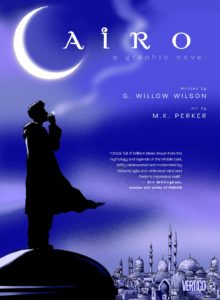
Wilson: Karen Berger gave me my first job in comics maybe 12 years ago now, when I was writing my first OGN, Cairo. When I was writing it, remotely, I was living in Egypt and sending her scripts. I had known about her since I was a teenager, reading all of the epic — as you said — legendary Vertigo titles from the ’80s and ’90s and seeing her name on all those books. On Sandman, on Shade the Changing Man, when she was the group editor for Vertigo. So for me, it’s really a homecoming. I love working with Karen. She has a unique editorial vision that I think still stands out in the comic book industry. She has an eye for what is weird, what is new, and what is different and groundbreaking. I just feel very lucky to be able to work with her, because she’s a legend.
Silber: Is there anything else you’d like to say about where the story is going, and when we might see more next?
Wilson: Well I think this is a great time to pick up the series. Our first trade paperback comes out in the end of October. It’s a great time to call your local comic book shop or order online, or wherever you like to buy books. Next we are launching the first issue of the second arc, and the tension is ratcheting up. We’re meeting some space pirates. There really is something for everybody. There’s romance, there’s action. “Write what you want to read” is kind of my motto!
Invisible Kingdom Vol. 1 is available on Oct. 23 and Invisible Kingdom #6, which kicks off the second story arc, hits shelves Oct. 30. To keep up with G. Willow Wilson on social media, follow her on Twitter @GWillowWilson.


